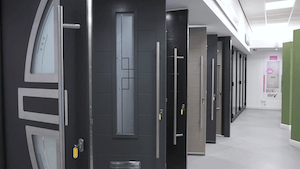Award Winning Installers
Frequently Asked Questions
Showing: Roofline FAQs
Why should I choose uPVC roofline over timber?
Firstly, timber fascia boards and soffits are prone to rot, and in order to prevent this from happening, they will require retreating periodically. uPVC roofline, however, will not ever require retreating and nor will it rot. In addition to requiring considerably less upkeep than timber roofline, uPVC is also highly durable, cost-effective and eco-friendly.
When should fascias and soffits be replaced?
As time goes on, your fascias and soffits will display general signs of wear and tear. Whilst these will usually be nothing to worry about, there are a number of strong indicators that the time to replace them is soon approaching such as:
- Cracks and sections that are broken
- Peeling paint
- If any pests have managed to get into your roof cavity
If you’ve noticed any of the aforementioned signs, feel free to give us a call and we can perform a survey of your roofline to see if and what needs replacing.
Is it possible to only have the fascias or soffits replaced?
Whilst this is possible, this is certainly not best practice. Soffits and fascia boards are attached to one another, so if you have your fascias replaced and then want your soffits doing at a later date, the new fascia will also need to be removed. The problem with this being that it may become damaged during this process, meaning the fascia will need replacing again.
Solely replacing the soffits and leaving the fascia boards and gutters is not only difficult to do but it will involve changing the fascias anyway.
Will uPVC fascias, soffits and bargeboards discolour over time?
Our uPVC fascias, soffits and bargeboards have been designed for long-life performance. Any of our White uPVC boards are guaranteed for 20 years against discolouring, warping and cracking, whilst coloured versions are guaranteed for 10.
Do soffits need to be vented?
UK Building Regulations stipulate that all newly built properties must have ventilation at eaves level. This can be provided via over-fascia ventilation, however, if over-fascia ventilation has not been fitted, vented soffit boards must be used instead.
It’s important to point out that neither of these forms of ventilation is necessary on properties that were built before these specific Building Regs came into enforcement. However, it’s still important that air can flow freely between the roof area and the outside or condensation will begin to build up, potentially leading to mould and rot.
Is it possible to colour match fascias, soffits and guttering?
Yes, it is. For an exact colour match, fascias, soffits and guttering are all available in white or grey. Complementary colour combinations are also available, although colours will not match exactly. For example, you might pair rosewood fascia & soffits with brown guttering or black gutters with black ash fascia & soffit boards.
What’s the difference between fascia boards and bargeboards?
Although their respective names might suggest otherwise, the only actual difference between fascia boards and bargeboards is how they are used. Fascias are placed behind the gutters, supporting them and the bottom row of the roof tiles. They also run in a horizontal line. Bargeboards, on the other hand, are located at the gable end of a property and run diagonally. Because they’re located at the gable ends of a property, bargeboards also perform more of a decorative function.
How much maintenance do uPVC roofline products require?
Very little, hence why they’re such a desirable product. In order to keep them looking their best, we recommend cleaning with them with warm, soapy water and a non-abrasive cloth two times a year. If there is a high volume of trees surrounding your home, however, your roofline might get dirty more quickly, meaning you need to increase the volume of cleaning.
Do gutters need to be cleared often?
After we’ve finished installing new gutters on your home, it’s very understandable that you’d want to keep them clear, working properly and in the best condition. You can do this by clearing them at least once per year. When clearing them, you can do so by hand but be sure to proceed with caution and follow the best health & safety practices.
If your home happens to be surrounded by a number of trees or some other form of overhanging foliage, we recommend clearing your gutters more regularly. This is because leaves, twigs and other organic material will build up in them faster.
Your Buying Journey
Showroom
Visit our showroom to talk to the Droylsden Glass experts and gain inspiration for your home improvement plans.
Design & Order
We will design the perfect home improvements to suit your individual requirements, completing your order down to the specific details.
Survey
We will visit your home at a convenient time to complete a full site survey. This will ensure any necessary regulations are adhered to.
Manufacture
All of our double-glazing products are manufactured by highly skilled experts who use industry-leading techniques. This ensures the maximum product quality.
Installation
Our fully qualified installers will fit your new products in a turn-around time as short as possible, as we know how busy homeowners are.
Aftercare
All of our products come with a comprehensive guarantee. In the unlikely event of an issue, our service team will be able to assist you with our extensive aftercare services.


















